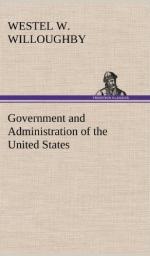[Footnote 1: McCulloch v. Md., 4 Dall., 316.]
Said Chief Justice Chase:[1] “The union of the States never was a purely artificial and arbitrary relation. It began among the colonies, and grew out of common origin, mutual sympathies, kindred principles, and geographical relations. It was confirmed and strengthened by the necessities of war, and received definite form and character and sanction from the articles of Confederation. By these the union was solemnly declared to ‘be perpetual.’ And when the articles were found to be inadequate to the exigencies of the country, the constitution was ordained ‘to form a more perfect union.’ It is difficult to convey the idea of indissoluble unity more clearly than by these words. What can be more indissoluble if a perpetual union made more perfect, is not? But the perpetuity and indissolubility of the union, by no means implies the loss of distinct and individual existence, or of the right of self-government by the States.... Without the States in Union, there could be no such political body as the United States. Not only, therefore, can there be no loss of separate and independent autonomy to the States, through their union under the constitution, but it may be not unreasonably said that the preservation of the States, and the maintenance of their governments are as much within the design and care of the constitution, as the preservation of the Union and the maintenance of the National Government. The constitution in all its provisions looks to an indestructible Union composed of indestructible States.”
[Footnote 1: Texas v. White, 7 Wall., 750.]
A civil war of four years’ duration has decided the Unionist theory of our government to be the one under which the Nation is to be governed. Whether or not, in point of fact, the Nation was older than the States, and the constitution not a compact, but an indissoluble Union, will always remain a question to be discussed. The dispute turns upon a point that does not admit of final determination. We can only theorize. To maintain the view that the Union is older than the States it is necessary to show that the Continental Congress was of such a character, and its powers of such a nature, that a




